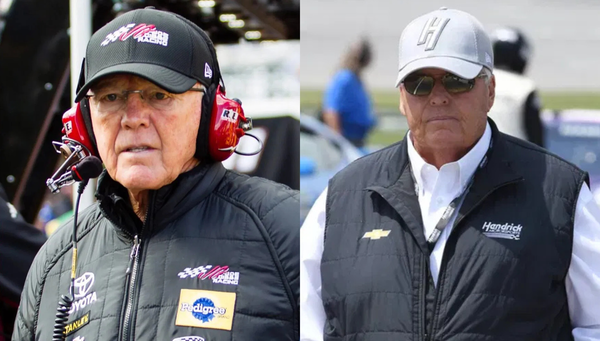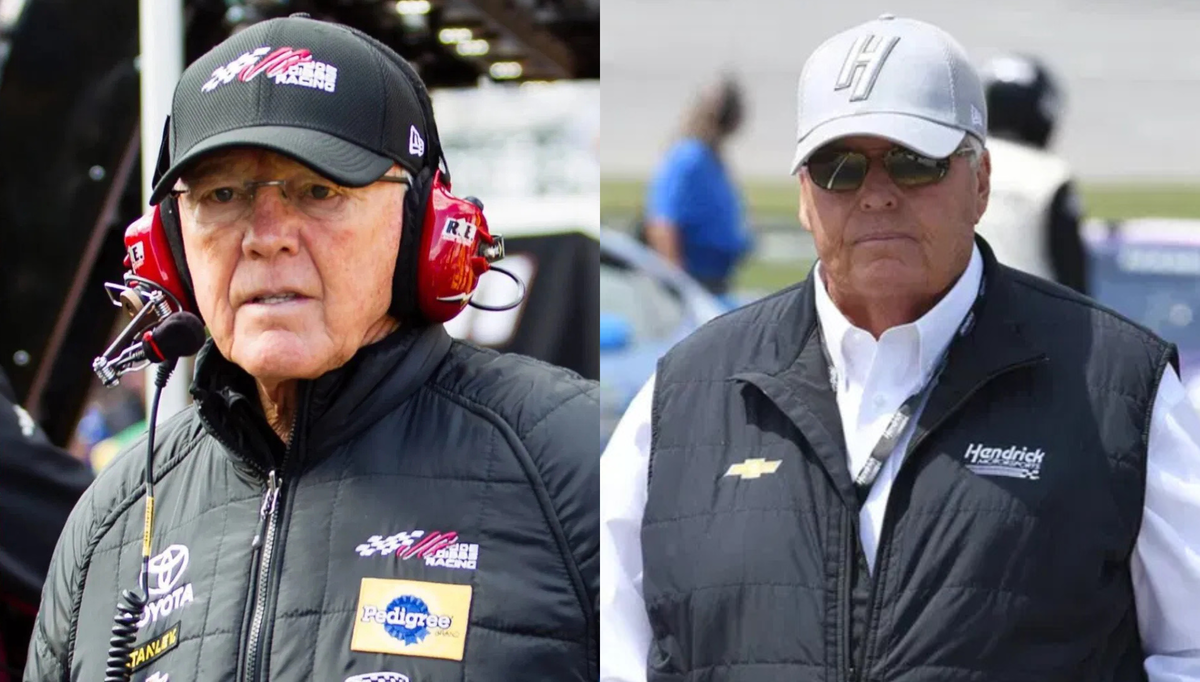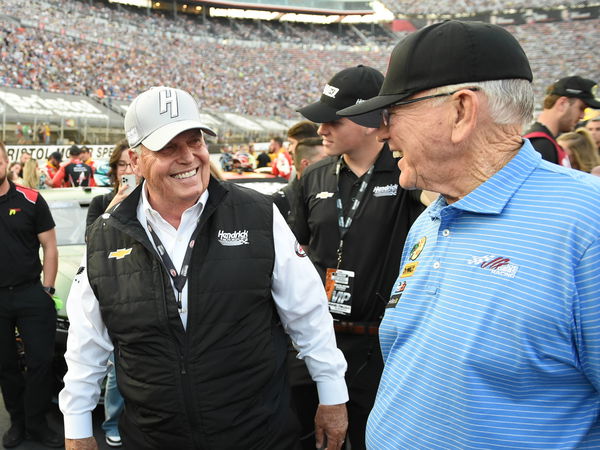

547 wins. That’s how many times Rick Hendrick and Joe Gibbs have dominated in the NASCAR Cup Series. This year alone, the Toyota outfit grabbed 13 triumphs, while all four Hendrick Motorsports drivers clinched a spot in the playoffs. Even the Championship 4 only featured contenders from these two teams, raising eyebrows about their dominance at the highest level. But is this kind of supremacy detrimental to the stock car racing series?
Watch What’s Trending Now!
Earlier this year, influencers like Eric Estepp spotlighted the four-car exception these teams hold under new charter rules, calling it uneven. “I don’t know, sounds kind of unfair to me,” the YouTuber remarked, noting how extra cars build data advantages smaller teams can’t touch. Owners from both sides back the charters for a steady footing, but calls for adjustments grow to fuel new battles. And now the time feels perfect to cap bigger teams.
ADVERTISEMENT
Insider pushes for a three-car cap to spark true parity
Jordan Bianchi, dropping gems on The Teardown podcast, didn’t hold back on fixing NASCAR’s team landscape. He zeroed in on the stranglehold by Hendrick Motorsports and Joe Gibbs Racing. “If you look at the sport right now… Joe Gibbs Racing and Hendrick Motorsports dominated to an excessive degree,” Bianchi noted, highlighting their dominance in playoff victories, where Mr. H has 61 wins and Joe Gibbs has 42 victories.
Both teams have this edge in the playoffs because the new charter agreement gives them special treatment that allows them to race with four cars in the field. And this special treatment leaves smaller teams like Trackhouse, which run with two full-time drivers, scraping for more charters despite the current cap for cars being three.
Bianchi‘s fix is to limit every team to three cars maximum, no exceptions, and end technical alliances that amplify big-team advantages. “I want to go to three-car teams, and I also want to severely limit technical alliances,” he urged, arguing it would level resources and let sharp and smart calls from smaller operations shine.
ADVERTISEMENT

Imago
BRISTOL, TN – SEPTEMBER 21: Rick Hendrick and Joe Gibbs talk prior to the running of the NASCAR, Motorsport, USA Cup Series Bass Pro Shops Night Race on September 21, 2024, at Bristol Motor Speedway in Bristol, TN. Photo by Jeffrey Vest/Icon Sportswire AUTO: SEP 21 NASCAR Cup Series Bass Pro Shops Night Race EDITORIAL USE ONLY Icon2409212756
Picture Ross Chastain‘s Trackhouse nearly winning the championship title, which would be an ‘underdog’ moment. And these types of instances could become routine if parity kicks in properly, giving underdogs like RFK Racing or 23XI real shots at glory without the resource scarcity. It’s not about taking something away from Hendrick Motorsports or Joe Gibbs Racing overnight, but about making a path for smaller teams to have their moment to shine as well.
ADVERTISEMENT
The charter tweaks made this year already point to this parity, with most teams locked at three. Yet, Hendrick Motorsports and Joe Gibbs Racing continue to have an extra edge over smaller teams. Bianchi sees this three-car rule as a solid way to create equity. He also suggests that by keeping alliances between bigger teams in check, it forces innovation across the board, much like the Next Gen car’s cost cuts since 2022.
But Bianchi’s blueprint doesn’t stop at teams; it’s part of a bigger revamp eyeing the grind of modern NASCAR.
ADVERTISEMENT
Jordan Bianchi urges trimming the schedule
The 2025 Cup season tested limits, stretching from February’s Daytona 500 kickoff to Phoenix’s November finale with just one April off across 38 events. Teams crossed the country, crews battled burnout, and even viewership dipped 13-18% to about 2.5 million per race amid NFL clashes.
Jordan Bianchi suggested reducing the schedule, saying, “One thing I’m going to do is I’m going to reduce the schedule. That will be something different, you know, whether that’s Montreal or Mexico City or whatever else, if we want to do something.” Bianchi declared, slamming the 38-race load as overkill that risks fan fatigue. This echoes Jeff Gluck’s vote for smarter spacing, like summer midweeks, to ease the haul without slashing core action.
His remedy also hits on the scheduling of the races, removing second dates at spots like Las Vegas and Bristol to make it a 29-point race. He also suggested adding a fresh international twist, maybe Montreal.
ADVERTISEMENT
Shortening the schedule could boost global appeal and keep the garage refreshed, countering dips from exhausting slots. With exhibitions like the Clash eyeing a return to Daytona, it honors its roots without looking too much. The 2025 season already saw a non-stop schedule, which exposed how exhausting the season can be, highlighting the need for change in the foreseeable future.
ADVERTISEMENT
ADVERTISEMENT
ADVERTISEMENT

